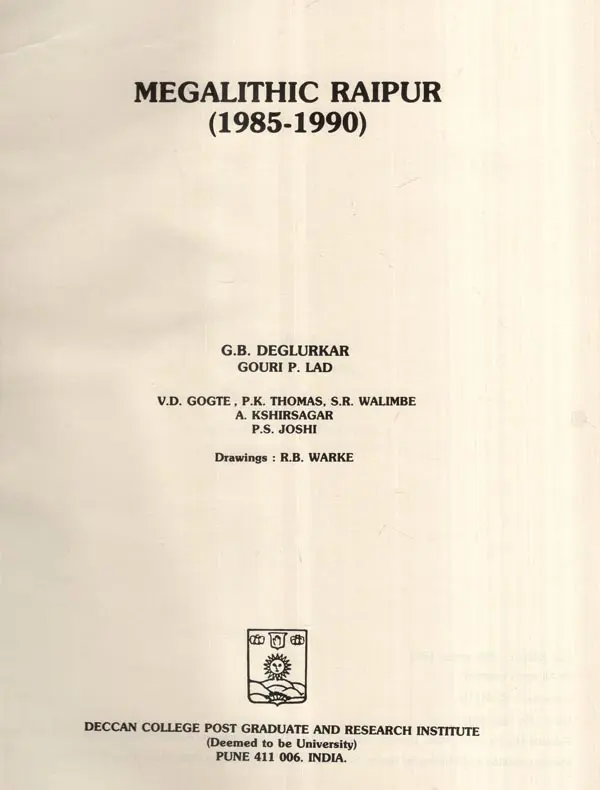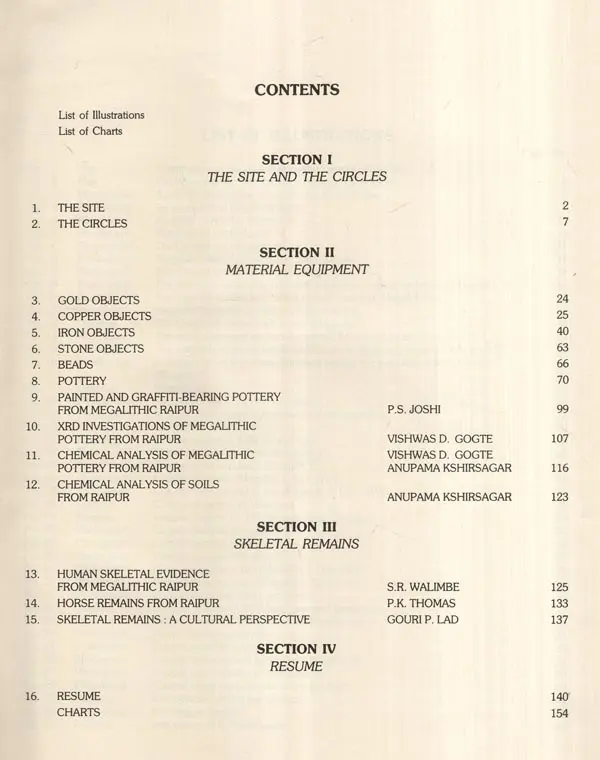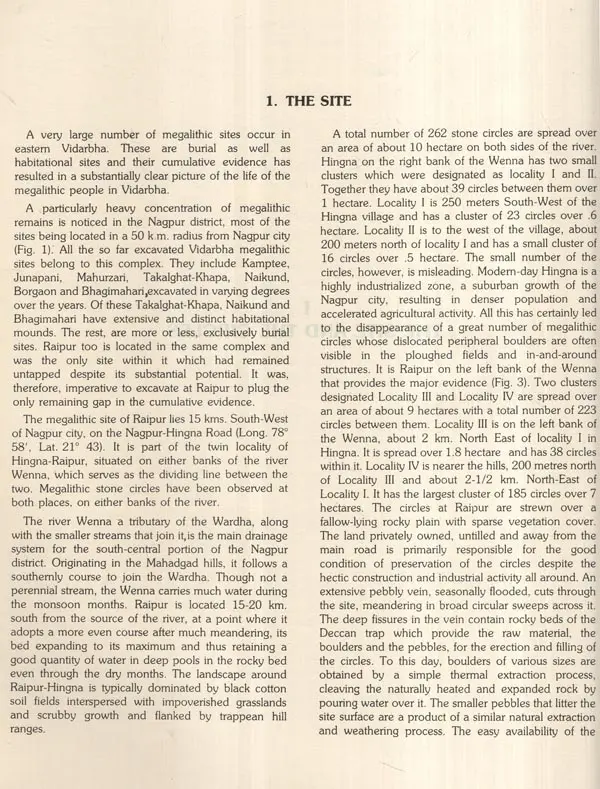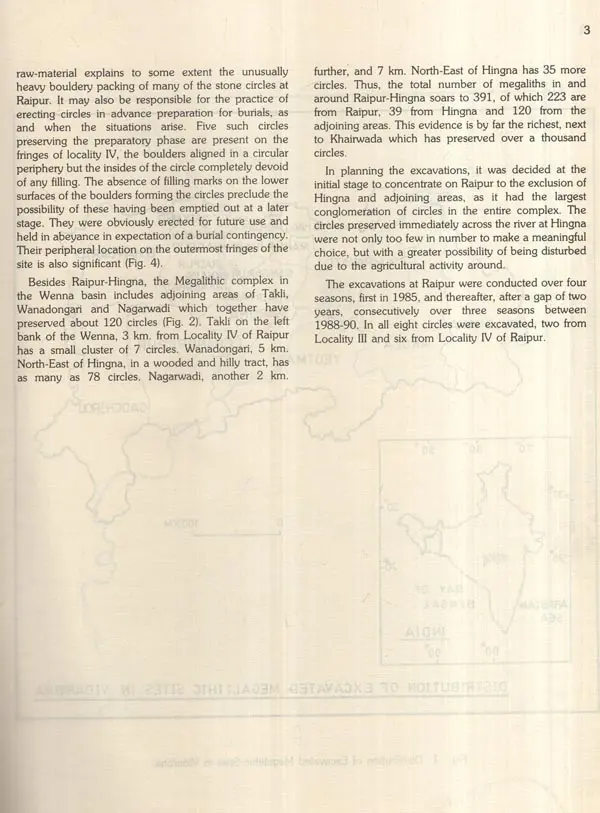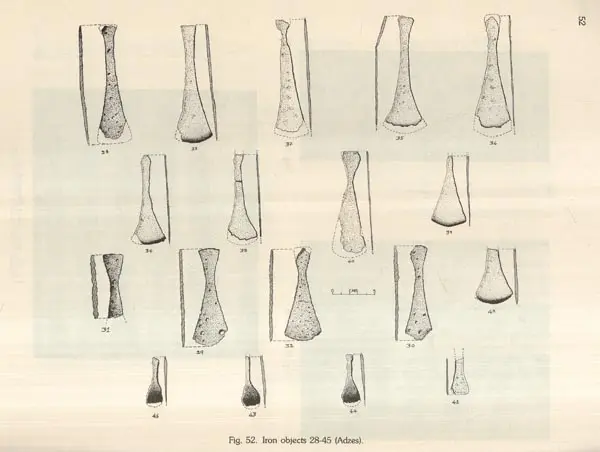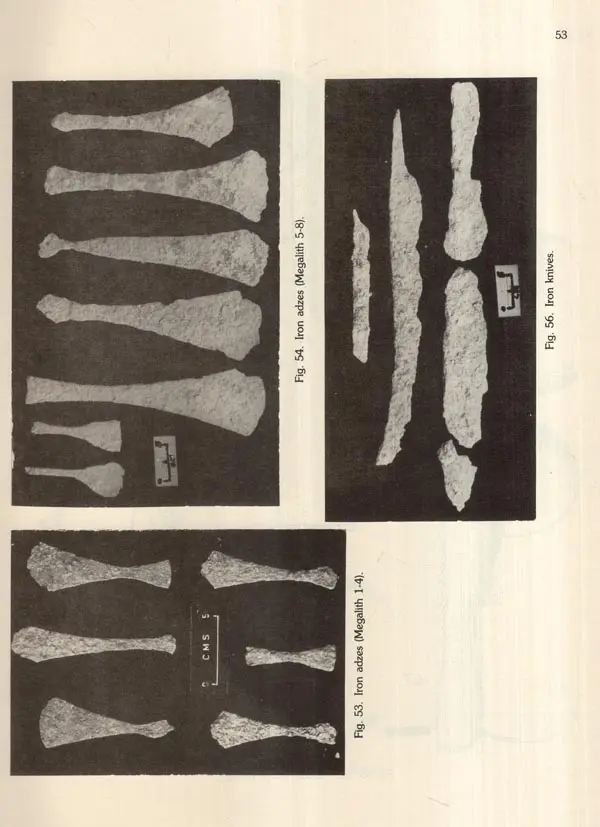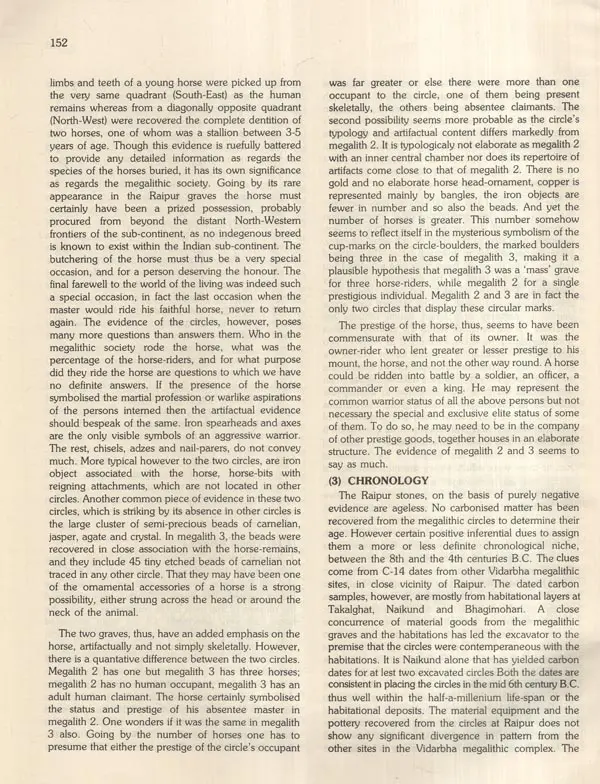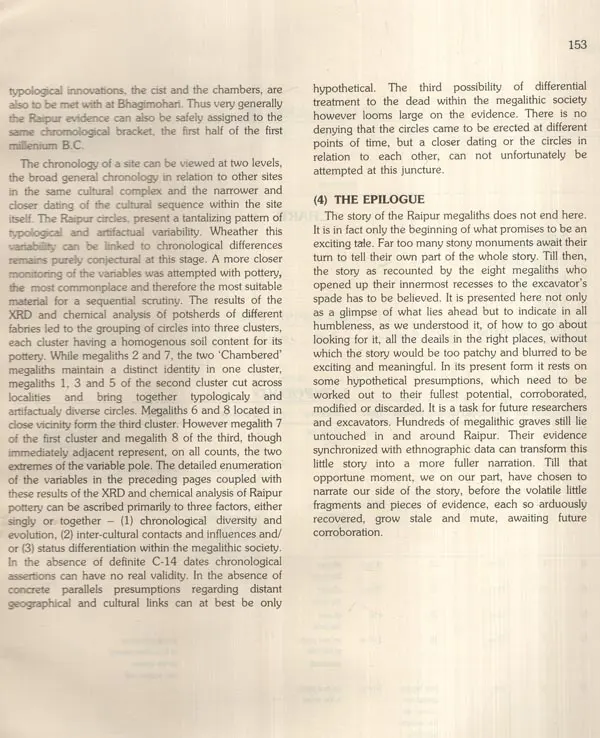Foreword Burials provide a uniquely rich source of material to archaeologists for reconstructing the lifeways of ancient societies. They not only yield physical remains of human populations but also cultural materials like intact pottery vessels, valuable omaments, besides tools and weapons not always encountered in habitation areas. In India although burials are known from the Mesolithic period onwards, they are particularly numerous in the Iron age, specially in the southern part of the peninsula. Because of the association of large stones with most of these burials they have been designated Megalithic.
Preface Raipur was first excavated by the Deccan College in the winter of 1984-85. It was the last of a series of megalithic sites in Vidarbha excavated by Prof. S.B. Deo (then Director of the Institute and now Emeritus Professor at the Deccan College), between 1968 and 1985. Though exclusively, a burial site its potential was immediately obvious. There were a large number of circles in very good conditions of preservation and there was an exciting variability in their typology, particularly the hidden features of their interiors. However the proximity of the site to the industrial zone of Hingna in the suburbs of Nagpur city rendered it vulnerable to despoliation in not too distant a future. It was therefore decided in 1987 to take up Raipur once again, for a more conclusive evidence, before it was too late. The second foray into Raipur was however dogged, right from the onset, with unsurmountable obstacles. A severe paucity of funds made the progress slow and tedious, spread over three exhausting seasons. The work had to be carried through with a team of only three persons, the sheer physical strain of the work restricting wider enquiry. Despite these difficulties a fair amount of representative evidence was collected at Raipur to make reporting on the site a worthwhile attempt.
Book's Contents and Sample Pages
